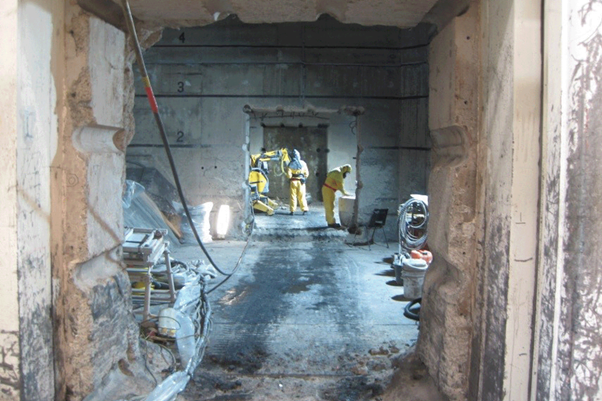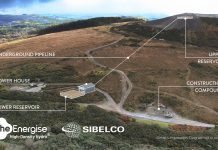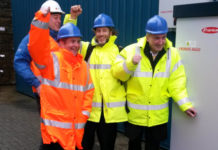Over 2,100 tonnes of solid radioactive waste – the equivalent weight of 153 Big Ben bells – have been retrieved and safely stored at the defunct Hunterston A nuclear plant.
Decomissioning the closed nuclear site on the Ayrshire coast has taken more than a decade. Hunterston A operated from 1964 to 1999.
Britain’s Nuclear Decommissioning Authority reckons Hunterston A holds the largest inventory of solid ILW ( intermediate level waste ) across all its sites.
The Hunterston store consists of contaminated metallic components, debris removed from spent fuel elements and 30,000 fuel element graphite sleeves.
Mark Blackley, Hunterston A’s site director, said: “This is a fantastic achievement which has safely and compliantly reduced one of the most significant hazards on site. Over 85% of the ILW inventory has now been retrieved. This is a tremendous testament to everyone who has been involved.”
“The remaining 15% of ILW inventory are residual sludges from the spent fuel storage ponds and acids. These are in the process of being recovered and treated.
Gareth Taylor, performance improvement director at the Nuclear Decommissioning Authority, said: “This is a significant milestone in our mission to safely and securely decommission our legacy nuclear sites. It is fantastic to see the culmination of many years of hard work and planning.
“It’s a collective achievement that the whole team are rightfully proud of, and we will be looking to take forward the lessons learned and apply them across our other sites.”
The waste was transported via underground tunnels and stored in one of five above-ground concrete bunkers, constructed onsite between the 1960s and 1980s.
The Solid Active Waste Bunker Retrieval project was established to remove the waste and empty the five bunkers in sequence, by breaking through the walls one by one.
The initial breakthrough at bunker five was conducted manually in 2014 using core drills and wire saws to remove an 800mm deep concrete slab. Then a remotely operated vehicle broke through the remaining 400mm depth to create the first full opening.
Remotely operated vehicles were used to recover the waste to a purpose-built facility built on the side elevation of bunker five. The waste was then loaded in to three metre cube size stainless steel boxes. The filled boxes were then transported to the site’s ILW store pending future encapsulation at the solid intermediate level waste encapsulation facility, before being returned to the ILW store for long term storage in line with the Scottish Government’s higher activity waste policy.
ILW becomes a site’s highest radiological hazard when all the spent fuel has been removed and is often located in hard-to-reach areas. This means that the task of retrieving the waste is a complicated business requiring, in some cases, many years of engineering work before it can begin in earnest.
Stuart Blair, waste operations manager at Hunterston A, commented: “The process to empty the bunkers has not been without its challenges. The team has overcome many technical challenges throughout, employing operational experience and innovation to progress the waste recoveries safely and efficiently.”
“This represents a major milestone for the entire site with all colleagues across functions and departments playing a key role in supporting this achievement”.




